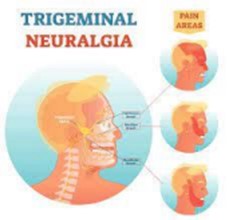A client diagnosed with severe Alzheimer's has been admitted to a long term care facility. Which of the following are appropriate activities for the nurse to include in the care plan?
Simple puzzles
Board games
Dangling ribbons or a mobile
Drawing with crayons
The Correct Answer is A
Choice A Rationale: Simple puzzles are appropriate activities for a client with severe Alzheimer's because they stimulate cognitive function and provide a sense of accomplishment.
Choice B Rationale: Board games are too complex and frustrating for a client with severe Alzheimer's, as they require memory, strategy, and social interaction.
Choice C Rationale: Dangling ribbons or a mobile are infantile and demeaning activities that do not respect the dignity and autonomy of the client.
Choice D Rationale: Drawing with crayons may be suitable for some clients with Alzheimer's, but it is not specific to the diagnosis and may not appeal to all clients.
Nursing Test Bank
Naxlex Comprehensive Predictor Exams
Related Questions
Correct Answer is B
Explanation
Choice A Rationale: Keeping the diaphragm in place for at least 4 hours after intercourse is a recommendation, but it does not address the specific concern of the client wanting to continue using her diaphragm postpartum.
Choice B Rationale: Having the client's provider refit her for a new diaphragm is the appropriate instruction after childbirth. The size and shape of the cervix can change postpartum, affecting the fit of the diaphragm.
Choice C Rationale: Using an oil-based vaginal lubricant can damage the diaphragm and is not recommended.
Choice D Rationale: Storing the diaphragm in sterile water after each use is not a standard practice. Proper cleaning and storage in a dry, cool place are recommended.
Correct Answer is D
Explanation
Choice A Rationale: Linking the pain to nasal stuffiness is not an accurate explanation of trigeminal neuralgia.
Choice B Rationale: Hypoglycemia is not typically related to trigeminal neuralgia.
Choice C Rationale: Releasing catecholamines with infection or stress is not the primary cause of trigeminal neuralgia.
Choice D Rationale: Pain is often due to stimulation of the affected nerve by pressure and temperature. This is a more accurate and relevant explanation for trigeminal neuralgia.

Whether you are a student looking to ace your exams or a practicing nurse seeking to enhance your expertise , our nursing education contents will empower you with the confidence and competence to make a difference in the lives of patients and become a respected leader in the healthcare field.
Visit Naxlex, invest in your future and unlock endless possibilities with our unparalleled nursing education contents today
Report Wrong Answer on the Current Question
Do you disagree with the answer? If yes, what is your expected answer? Explain.
Kindly be descriptive with the issue you are facing.
